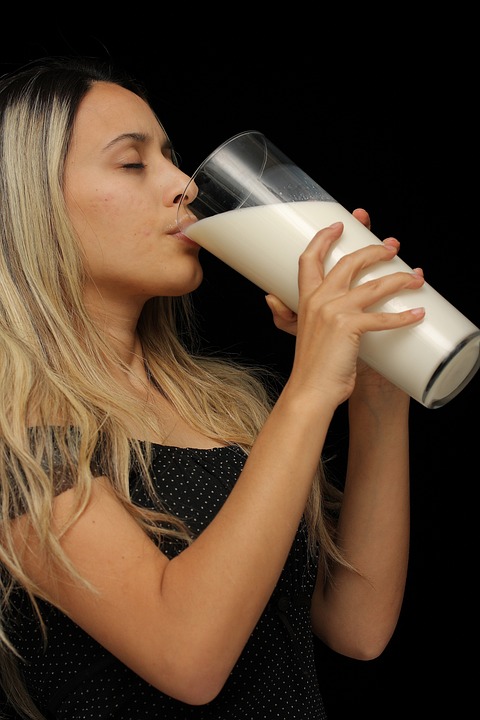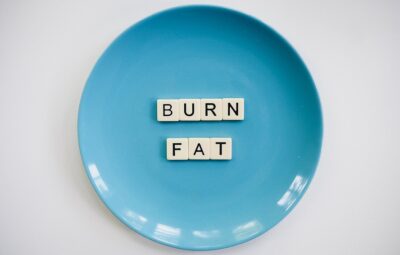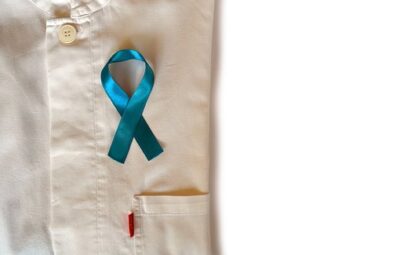A serious and disabling disorder, osteoporosis is a metabolic bone disease that is common in the Western world. Osteoporosis is a problem with bones where they have low mass and are more fragile. This makes them more likely to break. The sites where fractures are most likely to occur are the spine, hip, and forearm. More women than men have osteoporosis, and it becomes more common as people age.
More than 10 million Americans have osteoporosis, a disorder that causes bones to weaken and become thin, and many more have a lesser form of weak bones called osteopenia. Osteoporosis can have a significant impact on health, as people who have a fracture due to osteoporosis are at an increased risk of having a disability or dying.
The Dynamic State of Bones
Osteoblasts are cells that construct bone matrix and fill it with calcium. While osteoclasts are breaking down and reabsorbing bone, The balance is kept fine by many factors, such as systemic hormones and cytokines. Most people’s bone mass peaks in their mid-20s and then levels off for about a decade. During this time, there is a constant turnover of bone, with new bone being created at the same rate it is being broken down.
As our bodies age, this fine balance is lost. As people enter midlife, the levels of hormones in their body change, with women experiencing more drastic changes than men. This hormonal shift causes the osteoclasts (cells that break down bone) to become more active, resulting in a loss of bone mass. Women begin to lose bone mass before they reach menopause, but the rate of loss can increase up to ten times during the first six years after menopause. This is the essence of type I osteoporosis.
As people age, their bones become more fragile due to overactive osteoclasts. The problem is worsened by the fact that osteoblasts may become less active from age 60 onward, leading to type II osteoporosis. Nowadays, the dense bone in the hip, shin, pelvis and other sites is more likely to fracture because the osteoblasts don’t make enough of it. This is different from the past when the spongy-looking bone in the vertebrae was more at risk from excess osteoclast activity.
A broken hip may lead to death in old people, and it also creates an expense of $40,000 on average. This affects patients, their families, and the health care system. Over 30% of all hip fractures occur in men.
Who Is at Risk?
The five main genetic factors that help set the stage for osteoporosis are ancestry, age, sex, weight, and diet. Americans of European or Asian ancestry are more susceptible than African-Americans. The genes we receive from our parents are mixed up with other genes from our grandparents and other relatives, so you may not have received all the same genes as your osteoporotic relative.
Your odds of getting osteoporosis are mostly based on your surroundings and how healthy you are, not on your genes. If you’re small or have had anorexia or bulimia, you’re more likely to get osteoporosis later on. If someone has a history of not having menstrual periods, that also increases their risk. Smoking and heavy alcohol use promote weak, brittle bones. Osteoporosis is caused by a calcium-phosphorus imbalance that is favored by a high-phosphorus diet, such as a fast-food hamburger and soft drink. A lack of activity and exercise can lead to weak bones, as is seen in people who spend a lot of time in space or in bed.
Age itself is a factor in bone health. The levels of bone-protecting sex hormones decline as people age, more quickly for women than men. The levels of 1,25-dihydroxy vitamin D, melatonin, and dehydroepiandrosterone (DHEA) all decrease as a person gets older. Cortisol and parathyroid hormone increase with age. There are hormones that help with bone maintenance, such as testosterone, estrogen, and progesterone. Additionally, vitamin D, DHEA, and melatonin are all helpful in keeping bones healthy. These hormones promote bone loss.
Cortisone-type drugs are occasionally the cause of osteoporosis. The following text explains that Antiepileptic drugs may have an effect on bones by reducing the vitamin D levels in the body. Lithium, tamoxifen, and high doses of thyroid hormone can also have this effect on bones.
Reducing Risk with Calcium
There are several things adults can do to reduce their risk of developing osteoporosis. These include engaging in regular weight-bearing exercise, eating a healthy diet, avoiding tobacco and alcohol, and minimizing their use of bone-weakening prescription drugs.
To promote bone health, it is recommended to consume foods with calcium, such as dark green leafy vegetables, broccoli, legumes, canned salmon, and sardines, as well as dairy products like milk and cheese.
Although you would expect osteoporosis to be more common in countries where milk consumption is high, it is actually quite common in Sweden and Norway. Some possible explanations for this anomaly are that people are getting too much vitamin A from fortified milk or that there is a widespread deficiency in vitamin K.
Daily calcium requirements vary by age. The National Academy of Sciences and National Osteoporosis Foundation recommend the following guidelines:
|
Although it would be ideal for getting your daily calcium requirement from food, many Americans don’t get enough calcium in their diets. Hence, calcium supplements are good insurance against deficiency. Some doctors suggest taking chewable antacid tablets as a calcium supplement to help their patients. Although taking calcium tablets may seem like a good idea, it’s not because the type of calcium in those tablets—calcium carbonate—is poorly absorbed, especially in many elderly people who lack adequate stomach acid.
The best way to prevent deficiency is to start early when bones are still growing. In one double-blind study, 94 teenage girls were given calcium citrate malate (a form of calcium preferred for its absorbability) or a placebo for 18 months.12 The supplement increased the girls’ calcium intake from 80% of the recommended dietary allowance to 110%, with striking results: 24 grams more bone gained in the calcium group, amounting to an additional 1.3% of skeletal mass per year. The “head start” refers to the early onset of puberty, which should protect young women from the risk of osteoporotic bone fracture later in life.
A different research team looked at calcium citrate malate with a bigger subject group over the course of 24 months. The results and conclusions were similar. The calcium’s effectiveness was based on the subjects’ physical maturity, which reflected their sex hormone activity.
Calcium is important for bones even after a person’s bone mass begins to decline. It helps by slowing the rate of loss. In a study from the USDA’s Human Nutrition Research Center on Aging at Tufts University, men and women aged 65 or older were given a daily dose of 500 mg of calcium citrate malate and 700 IU of vitamin D for a period of three years. 12 A study from the same institution showed that postmenopausal women with inadequate calcium intake who took a supplement of calcium citrate malate had less total-body bone loss than those who took calcium carbonate.
Types of Calcium Supplements
There are two main types of calcium supplements: carbonate and citrate. Calcium carbonate is a more affordable option, making it a more practical choice. Calcium supplements contain several different kinds of calcium salts. Each salt contains varying amounts of elemental calcium. There are several types of calcium supplements available, the most popular being calcium carbonate, calcium citrate, calcium lactate, and calcium gluconate. These supplements provide different amounts of elemental calcium, with calcium carbonate containing the most at 40%.
Some calcium supplements are also combined with vitamin D or magnesium. Supplement labels should be read carefully to ensure you are taking the right amount of calcium in the right form. The following information is important for anyone with health or dietary concerns.
Administration and Dosage
How much calcium you need each day depends on your age and sex. The amount of bone in the body peaks during the late teens and early twenties, after which it slowly begins to decrease. The daily recommended dietary allowance of calcium for an adult male is 1,000 mg for those aged 19 to 70 years and 1,200 mg for those aged >71 years. The recommended dietary allowance (RDA) for calcium is 1,000 mg for females aged 19 to 50 years and 1,200 mg for females aged >51 years.
You should not take more than 1,200 mg of calcium in supplement form unless a doctor or dietitian tells you to. On average, most Americans take between 750 mg and 900 mg of calcium in their diets.
Now it is known that vitamin D (calciferol) plays a big role in calcium absorption. The RDA of vitamin D used to be 200 IU for those up to age 50 years, 400 IU for people aged 51 to 70 years, and 600 IU for those over 70 years. The amount of vitamin D that your skin produces decreases as you age, so older people need to take in more vitamin D. These recommendations have since increased, as discussed below.
Calcium Deficiency
Conditions related to calcium deficiency include: -Hypoparathyroidism -Achlorhydria -Chronic diarrhea -Vitamin D deficiency -Steatorrhea -Sprue -Pregnancy and lactation -Menopause -Pancreatitis -Renal failure -Alkalosis -Hyperphosphatemia Calcium-replacement therapy may be necessary when taking certain drugs that can cause low calcium levels.
People who do not consume animal products, cannot digest lactose or consume minimal amounts of dairy are at risk for low calcium intake. This is due to osteoporosis, bowel or digestive diseases that make it difficult to absorb calcium or long-term corticosteroid treatment. Calcium supplements may help people meet their calcium requirements in these situations.
Calcium Sources
Osteoporosis is a condition that causes bones to become weak and brittle. Calcium is essential for the development and preservation of bone mass, and it can be obtained from natural sources or supplements. Fractures are one of the main complications associated with osteoporosis, and taking calcium can help prevent them. You can get calcium from a variety of sources, including dairy products, dark green leafy vegetables, grains, figs, fish with soft bones, and calcium-fortified foods. Even if you eat healthily and have a balanced diet, you may not get enough calcium every day.
Other sources of calcium include coral calcium and oyster shell calcium. Coral calcium is a form of calcium carbonate that comes from fossilized coral sources. The human body combines calcium with another material through a process called chelating. Chelating allows the body to metabolize the material it combines with calcium. Coral calcium is also used in surgeries involving the mouth and face, as well as in procedures for transplanted bones.
Calcium and Vitamin D: A major role of vitamin D is to help the body absorb calcium and maintain bone density. Some calcium supplements also contain vitamin D in order to promote absorption. Vitamin D2 and D3 are both forms of this vitamin. D2 (ergocalciferol) and D3 (cholecalciferol) are the two forms. The D2 form of the vitamin has a shorter lifespan than the D3 form.
A select few foods contain minute traces of vitamin D, for example, canned salmon that contains bones and egg yolks. Vitamin D can be found in fortified foods or produced naturally when the sun’s UV rays hit the skin. The RDA for vitamin D is 600 IU a day for persons aged 70 years or younger and for pregnant or breastfeeding women, and 800 IU for those aged 71 years or older.
The biologically active form of vitamin D, called calcitriol, is used to treat and prevent low levels of calcium in the blood of patients whose kidneys or parathyroid glands are not functioning normally.
There are several isoforms or analogs of vitamin K2 called MK-4 to MK-10. This vitamin helps prevent osteoporosis and the abnormal buildup of plaque in arteries and soft tissues, which are common problems associated with aging. Vitamin K2 is found in animals, including the beneficial probiotic bacteria from the gastrointestinal tract. Antibiotics prevent the normal growth of healthy bacteria, which impacts vitamin K2 production.
Although vitamin D3 is recognized for its role in bone health, vitamin K2 is also essential for maintaining healthy bones. Every 8 to 10 years, the human skeleton is replaced with good, dense bone, and vitamins D and K play large roles in the process. The therapeutic dose is higher than what is found in dietary supplements Vitamin K2 is an oral osteoporosis treatment that is taken in a dose of 45 mg a day. The therapeutic dose is higher than the amount of vitamin K2 that is found in dietary supplements.
Conclusion
The best way to prevent calcium deficiency is to treat it before it occurs. It is important to change risk factors, and pharmacists can help with this. They can recommend appropriate calcium and vitamin D supplements. Women who are at risk for low calcium levels should take calcium and vitamin D-rich foods and drinks quit smoking, and increase weight-bearing and muscle-strengthening exercise. It is important to monitor your body mass index (BMI) at older ages to reduce your risk of bone fractures.







